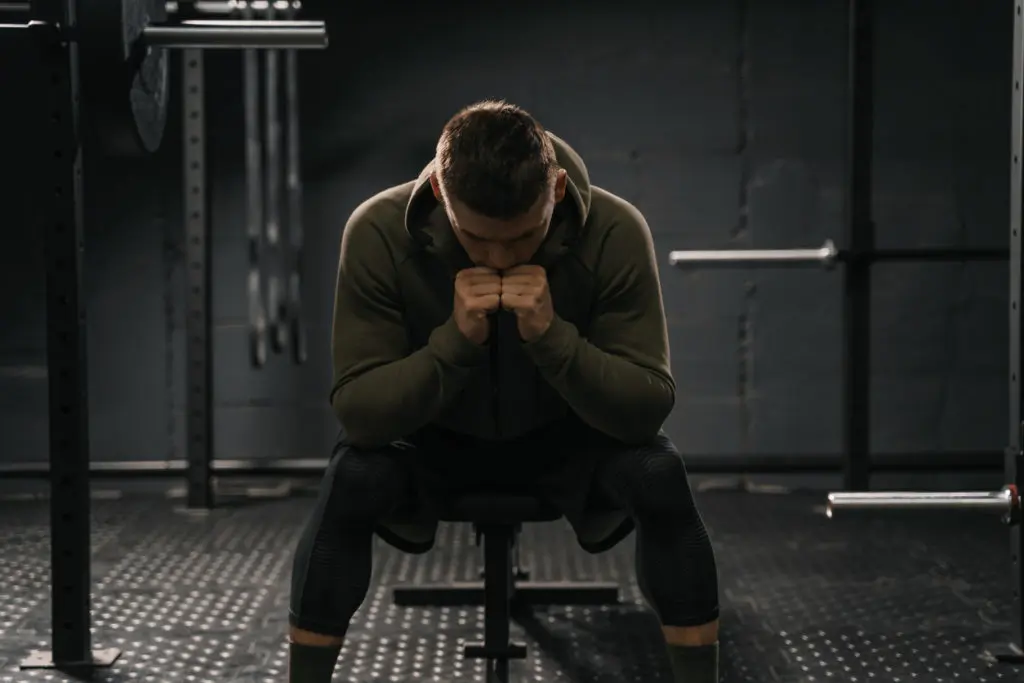You’ve been hitting the gym consistently, lifting weights, doing your cardio, maybe even throwing in some yoga. But despite your efforts, the results are either slow, or worse, non-existent. It’s frustrating to feel like you’re putting in the work but not getting the payback you deserve. If this sounds like your situation, you’re not alone. Many gym-goers hit a plateau at some point. The good news? There are usually a few common culprits behind the lack of progress, and with a few tweaks, you can break through these barriers and get back on track.
In this article, we’re going to dig deep into 5 reasons why you’re not seeing progress in the gym and provide actionable solutions to help you get back to making gains, whether you’re chasing strength, muscle growth, fat loss, or overall fitness.
1. You’re Not Following a Structured Program
Let’s start with the basics: consistency is key, but so is structure. Going to the gym without a plan is like driving without a map — you might end up somewhere, but it probably won’t be where you want to go. A lot of people fall into the trap of doing random workouts based on what they feel like or what they see others doing. This approach may work for beginners initially because the body is unaccustomed to the stress of weight training, but after a while, it leads to a plateau.
The Problem:
- Lack of Progressive Overload: Your muscles need to be challenged progressively to grow stronger or bigger. Without a plan that increases the load, volume, or intensity, your body has no reason to adapt.
- No Balance or Focus: Doing a random mix of exercises can create imbalances. For example, if you focus too much on chest and arms and neglect back and legs, it can lead to poor posture, injuries, and hindered progress.
The Solution:
Follow a structured workout program that includes:
- Periodization: This involves cycling through different phases of training (e.g., hypertrophy, strength, power) to keep your body guessing and adapting.
- Tracking Your Progress: Keep a log of your workouts, including the weights you lifted, sets, and reps. Aim to increase these metrics over time, whether it’s adding more weight, more reps, or reducing rest time.
- Balanced Programming: Make sure your program includes exercises for all major muscle groups. Even if your goal is to get bigger arms, you need to work your back and legs to support overall growth and avoid imbalances.
Pro Tip:
Hire a coach or use an app designed to provide you with a personalized workout plan. If that’s not an option, look up popular evidence-based programs like StrongLifts 5×5, PHUL (Power Hypertrophy Upper Lower), or the PPL (Push Pull Legs) routine.
2. You’re Not Eating Enough (Or Eating the Wrong Things)
You’ve heard the saying, “You can’t out-train a bad diet,” and it’s true. Nutrition plays a critical role in your progress, whether your goal is to lose fat, gain muscle, or boost performance. If your diet isn’t aligned with your goals, you’re likely spinning your wheels.
The Problem:
- Eating Too Little: If you’re trying to build muscle but aren’t eating enough calories, your body won’t have the raw materials it needs for growth. Similarly, if you’re cutting calories too drastically to lose weight, you might be sacrificing muscle mass and strength gains.
- Nutrient Deficiencies: A diet high in processed foods and low in micronutrients can lead to deficiencies that affect your energy levels, recovery, and overall progress.
- Not Enough Protein: Protein is essential for muscle repair and growth. If you’re not consuming enough, you’re missing out on gains.
The Solution:
- Calculate Your Macros: Figure out how many calories you need based on your goals (bulk, cut, or maintain) and adjust your macronutrient intake accordingly. Aim for at least 1.6-2.2 grams of protein per kg of body weight for muscle growth.
- Focus on Whole Foods: Prioritize nutrient-dense foods like lean proteins, whole grains, fruits, and vegetables. This will ensure you get the vitamins and minerals you need to support recovery and performance.
- Consider Timing: While meal timing isn’t everything, having a protein-rich meal or shake after your workout can help kickstart muscle recovery.
Pro Tip:
If you’re unsure about your diet, start by tracking your food intake using an app like MyFitnessPal. It can give you insights into your eating habits and help you make necessary adjustments.
3. You’re Not Prioritizing Recovery
One of the biggest mistakes gym-goers make is undervaluing recovery. You might think that the more you train, the faster you’ll progress, but that’s not always the case. Your muscles don’t grow in the gym — they grow when you’re resting.
The Problem:
- Overtraining: Working out too often or too intensely without giving your body adequate time to recover can lead to overtraining syndrome, which can cause fatigue, decreased performance, and even injury.
- Poor Sleep: Sleep is when your body does most of its recovery work. If you’re not getting enough quality sleep, you’re hindering muscle repair, hormone production (like testosterone and growth hormone), and overall performance.
- Neglecting Active Recovery: Sitting around doing nothing isn’t always the best way to recover. Without some movement, your muscles can become stiff and sore.
The Solution:
- Schedule Rest Days: Incorporate at least 1-2 full rest days per week. This doesn’t mean you can’t do anything — light activities like walking, stretching, or yoga are great for promoting recovery.
- Prioritize Sleep: Aim for 7-9 hours of sleep per night. Create a bedtime routine that helps you wind down, and avoid screens before bed to improve sleep quality.
- Include Recovery Modalities: Consider techniques like foam rolling, massage, contrast baths (hot/cold), and stretching. These can help alleviate soreness and speed up muscle repair.
Pro Tip:
Use a wearable fitness tracker or app to monitor your sleep and recovery metrics. This can give you insights into when you might need extra rest or a lighter workout.
4. You’re Not Focusing on Mind-Muscle Connection
The mind-muscle connection is often overlooked but can make a huge difference in your progress, especially if your goal is hypertrophy (muscle growth). It’s not just about moving the weight from point A to point B — it’s about engaging the right muscles and feeling them work throughout the entire range of motion.
The Problem:
- Poor Form: If you’re lifting with bad form or using momentum, you’re not targeting the muscles you intend to. This can lead to imbalances, lack of progress, and even injury.
- Rushing Through Reps: Many people do reps quickly to get through the set, but this reduces time under tension, which is crucial for muscle growth.
The Solution:
- Slow Down Your Reps: Focus on the eccentric (lowering) phase of each lift. This is when your muscles are under the most tension and where a lot of the growth happens.
- Visualize the Movement: Before each set, take a moment to picture the muscle you’re about to work. Concentrate on contracting that muscle during each rep.
- Practice Form with Lighter Weights: Drop the ego. If you can’t feel the muscle working, lighten the load and focus on perfecting your form.
Pro Tip:
Try pre-exhaustion techniques (e.g., doing isolation exercises like chest flyes before bench press) to help activate the target muscle, making it easier to establish the mind-muscle connection during compound lifts.
5. You’re Not Being Patient
We live in a world of instant gratification, but the truth is that building muscle, losing fat, and improving fitness takes time. Many people give up too soon because they don’t see results fast enough. The body doesn’t like change, and it takes consistent effort over a long period to force adaptation.
The Problem:
- Unrealistic Expectations: Social media often portrays unrealistic body transformations and quick fixes that aren’t sustainable. This can make you feel like you’re failing if you don’t see dramatic changes right away.
- Changing Programs Too Often: Program-hopping is another common issue. You try a workout routine for a few weeks, don’t see immediate results, and switch to something else. This inconsistency can hinder progress.
The Solution:
- Set Realistic, Incremental Goals: Instead of focusing only on the end goal (e.g., losing 20 pounds or gaining 10 pounds of muscle), set smaller, measurable goals that you can achieve along the way. Celebrate these milestones.
- Trust the Process: Stick with a program for at least 8-12 weeks before evaluating its effectiveness. Consistency is more important than intensity in the long run.
- Track Progress Beyond the Scale: Take progress photos, measurements, and note how your clothes fit. Strength improvements, increased stamina, and better mood are all signs of progress that go beyond just the numbers on a scale.
Pro Tip:
Stay motivated by focusing on the journey rather than the destination. Find joy in the process of working out, learning, and improving, and the results will follow.
Final Thoughts
If you’re not seeing progress in the gym, it’s usually due to a combination of factors rather than a single issue. Take an honest look at your training, nutrition, and recovery habits. Be willing to make adjustments and, most importantly, be patient. Fitness is a lifelong journey, and the rewards go far beyond just the physical changes. With dedication, the right approach, and a bit of patience, you’ll get back on track and start seeing the progress you deserve.
Consider incorporating regular assessments of your progress, such as fitness tests or body composition analyses, to gain a clearer picture of your improvements over time. Additionally, staying updated with the latest fitness research can provide new insights and techniques to enhance your training regimen. Engaging with a community, whether online or in-person, can also offer support and motivation, helping you stay committed to your fitness journey.
Explore incorporating technology like virtual reality workouts or AI-driven fitness apps that offer personalized feedback and adjustments to your routine. These tools can provide a more engaging and tailored workout experience, potentially leading to better adherence and results. Additionally, consider experimenting with new training modalities such as functional fitness or high-intensity interval training (HIIT) to challenge your body in different ways and break through plateaus.















One Comment